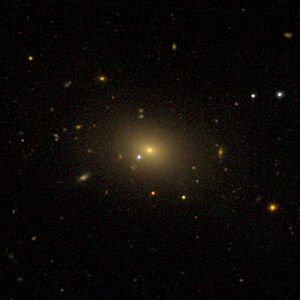NGC 707 facts for kids
NGC 707 is a fascinating spiral galaxy located in the Cetus constellation. It is very far away from our own Milky Way galaxy, about 246 million light-years from us. This means the light we see from it today started its journey 246 million years ago!
Contents
What is NGC 707?
NGC 707 is a huge collection of stars, gas, and dust. It is one of the countless galaxies in the universe. Astronomers study galaxies like NGC 707 to learn more about how the universe works.
A Spiral Galaxy
NGC 707 is called a spiral galaxy because of its shape. It has a flat, rotating disk with spiral arms that stretch out from a central bulge. Our own Milky Way galaxy is also a spiral galaxy! These arms are where many new stars are born.
Where is it Located?
NGC 707 can be found in the constellation Cetus. A constellation is a group of stars that form a pattern in the night sky. Cetus is often called "The Whale" because its stars seem to form the shape of a sea monster or whale. You can see Cetus in the autumn sky if you know where to look.
How Far Away is it?
When we say NGC 707 is 246 million light-years away, it means something very specific. A light-year is a way to measure huge distances in space. It is the distance that light travels in one whole year. Light moves incredibly fast, about 300,000 kilometers (186,000 miles) every second!
Measuring Cosmic Distances
Because space is so vast, using miles or kilometers would result in numbers that are too big to imagine. That's why astronomers use light-years. It helps them talk about the enormous distances between galaxies and stars in a simpler way. When we look at NGC 707, we are seeing it as it was 246 million years ago. This is because its light has taken that long to reach Earth.
Why Do We Study Galaxies?
Studying galaxies like NGC 707 helps scientists understand many things. They learn about how galaxies form and change over billions of years. They also learn about the different types of stars and how they live and die. By observing distant galaxies, we can piece together the history of the universe. It's like looking back in time!


